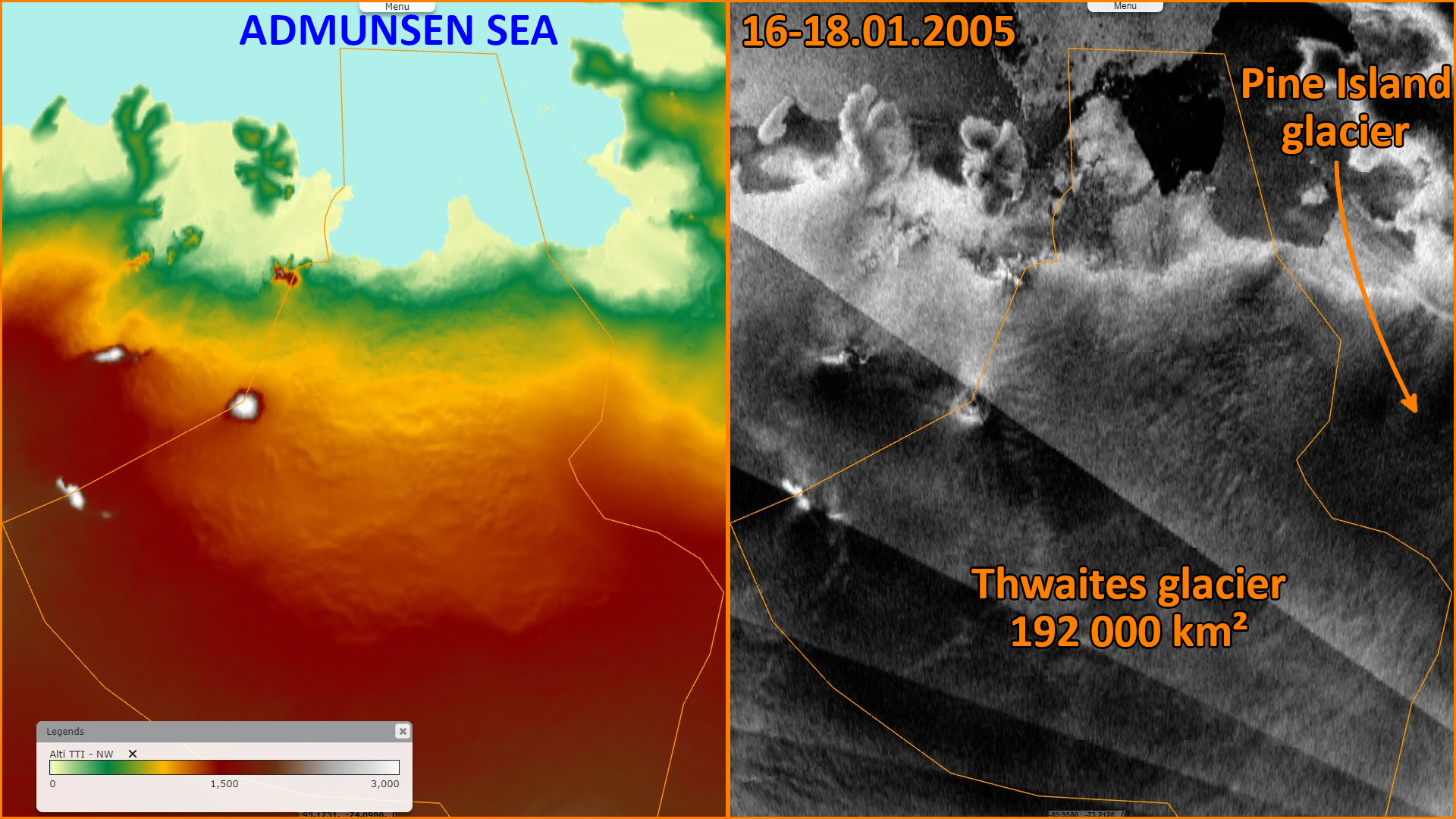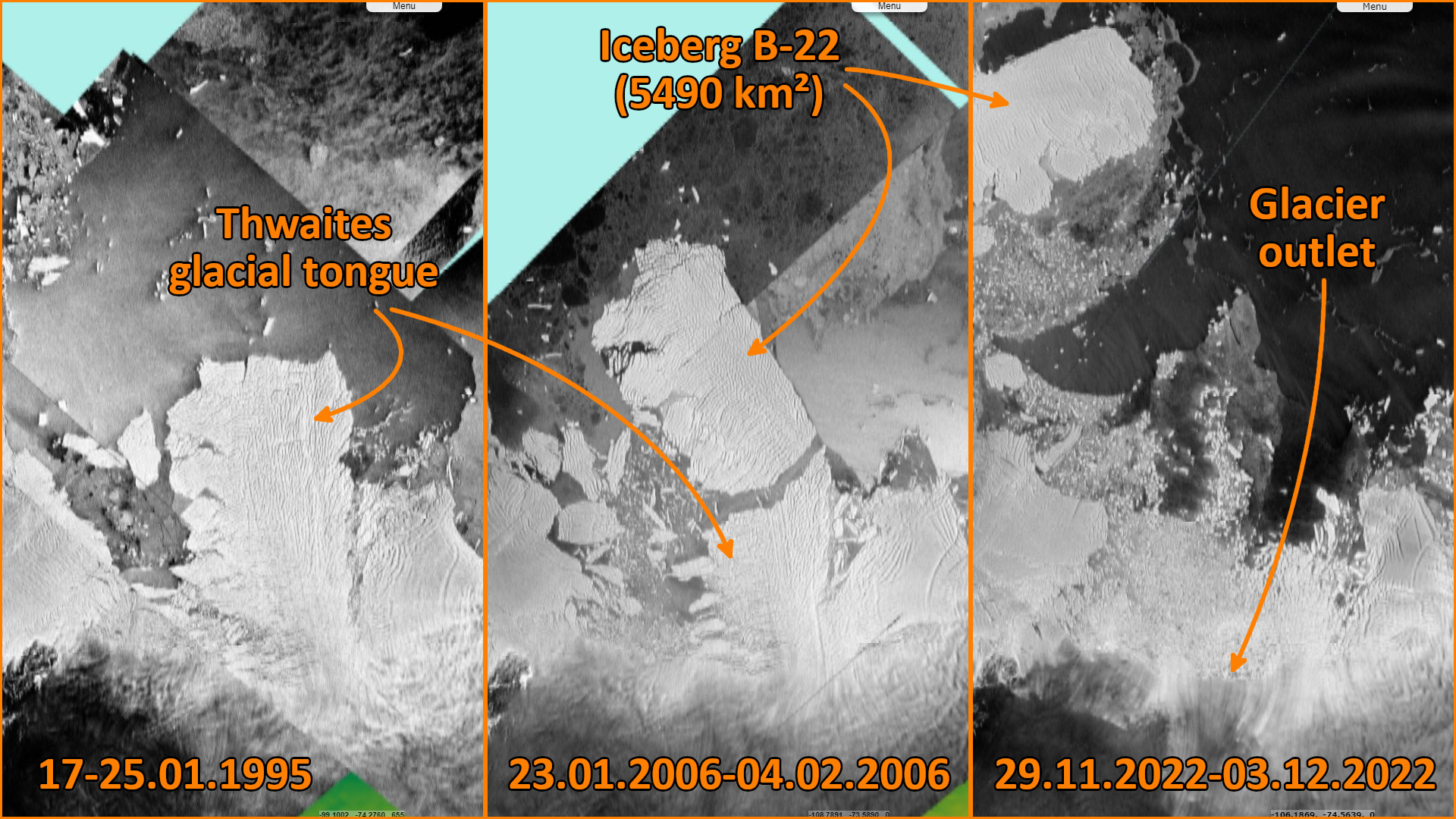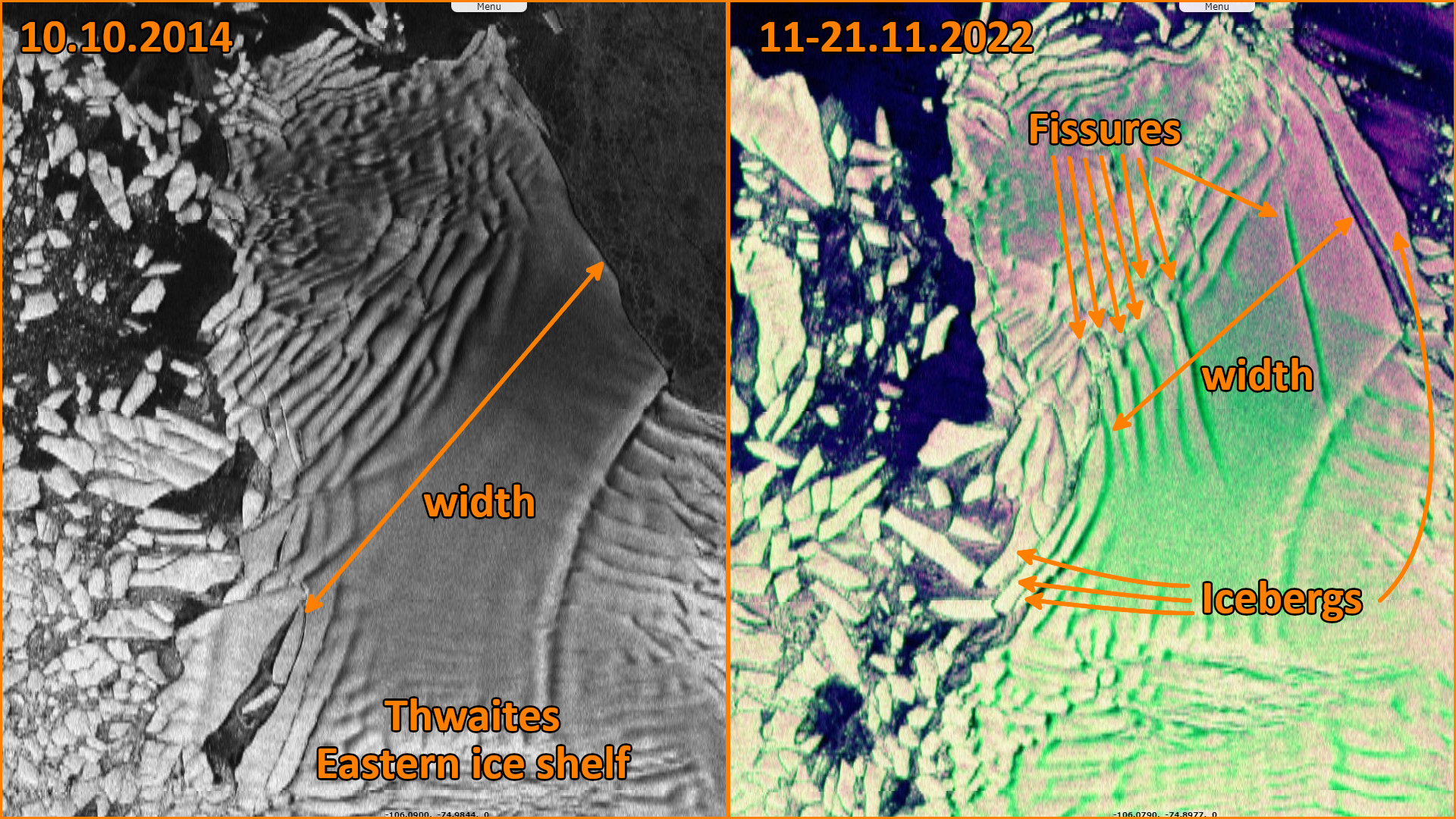Worrying evolution of Thwaites 'Doomsday' Glacier, West Antarctica
Sentinel-1 CSAR IW acquired on 10 October 2014 from 04:35:47 to 04:36:12 UTC
Sentinel-2 MSI acquired on 21 January 2022 at 15:12:59 UTC
...
Sentinel-1 CSAR EW acquired on 16 November 2022 at 04:28:25 UTC
Sentinel-1 CSAR IW acquired on 21 November 2022 at 04:36:43 UTC
Sentinel-2 MSI acquired on 21 January 2022 at 15:12:59 UTC
...
Sentinel-1 CSAR EW acquired on 16 November 2022 at 04:28:25 UTC
Sentinel-1 CSAR IW acquired on 21 November 2022 at 04:36:43 UTC
Keyword(s): Climate change, glacier, polar, coastal, iceberg, ice melt, global warming, sea level rise, biodiversity, Antarctica
Thwaites Glacier is located on the Western border of the Antarctic continent. It is monitored closely by scientists. The factsheet related to https://thwaitesglacier.org, one of these projects states: "Thwaites is the widest glacier on Earth, at ~120 km wide. Its fastest flowing grounded ice is centred between 50 and 100 km east of Mount Murphy on the north coast of West Antarctica. Thwaites Glacier Basin measures 192 000 km², roughly the size of the island of Britain, it is between 800 and 1200 metres deep at its grounding line."
"If Thwaites Glacier was to collapse entirely, global sea levels would increase by 65 cm, ice loss currently contributes around 4% of all global sea-level rise (assuming 3.5 mm annual sea-level rise). If Thwaites Glacier continues to accelerate, retreat, and widen at rates consistent with recent changes, it could contribute several cm to sea-level rise by the end of the century. Collapse of the glacier would require a few centuries."
Thwaites Glacier straddles some of the deepest bedrock in Antarctica, increasing its sensitivity to change.
"Annually Thwaites is losing about 50 billion tons of ice more than it is receiving in snowfall. Since 2000, the glacier has had a net loss of more than 1000 billion tons of ice. The amount of ice loss has doubled over the last 30 years by Thwaites and its neighbouring glaciers."
"Observations show unequivocally that the Thwaites Glacier ice-ocean system is undergoing the largest changes of any ice-ocean system in Antarctica. Ice surface speeds exceed 2 km annually near its grounding line. NASA discovered an underwater cavity underneath the glacier, with an area two-thirds the size of Manhattan in January 2019. The cavity formed mostly in the previous three years and is nearly a 300 metres tall, likely speeding up the glacier's decay."
In an article for the Guardian, John Vidal adds that the biggest concern might be the effect of this glacier on its neighbours: "Thwaites is worrisome, but there are many other great glaciers in Antarctica also retreating, thinning and melting as the Southern Ocean warms. Many are being held back because Thwaites acts like a cork, blocking their exit to the sea. Should Thwaites fall apart, scientists believe the others would speed up, leading to the collapse of the whole ice sheet and catastrophic global sea level rises of several metres."
Regarding the impact on biodiversity, Margot Hinry completes for National Geographics: In their fall, Thwaites and other glaciers in this geographical area would also weaken fauna. "Simulations show that large colonies of emperor penguins living around Antarctica are in danger of near extinction by 2100," says Yan Ropert Coudert, director of research in marine ecology at the CNRS. "If the environment changes drastically and the area warms up, [...] their whole life cycle will be modified and they will have to adapt, go elsewhere or perish.






